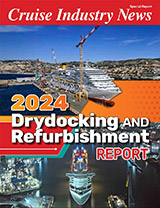ClassNK will release the English edition of Version II of its previously well-received Guidance for Measures to Cope with Degraded Marine Fuels: Taking into Account the Poor Combustibility of Fuels this November. While the first 1996 edition (Ver. I) focused on preventing increases in major damages attributable to fuel oil, the 2008 edition (Ver. II) takes a close look at what can be done to prevent FO problems that can arise from poor combustibility.
Key factors affecting FO problems noted in 1996 consist of the four “highs”, that is, high density, high viscosity, high sulfur, and high catalytic fines. Key factors affecting FO problems in 2008, however, have shifted to one “high” and three “lows”, that is, high density, low viscosity, low sulfur, and low catalytic fines. The text gives a good technical explanation of the many factors that contribute to problems caused by poor combustibility and the various measures that can be taken to address these issues.
The contents of this updated and revised Guidance include a discussion on the shift in factors affecting FO problems and examine FO with poor combustibility, low-sulfur FO, ISO standards, emission regulations, FO processing systems, and countermeasures for improving FO use. An extensive references section also includes useful information on various types of damage based on actual damage reports, a bibliography, a glossary, and other items of interest to readers.



